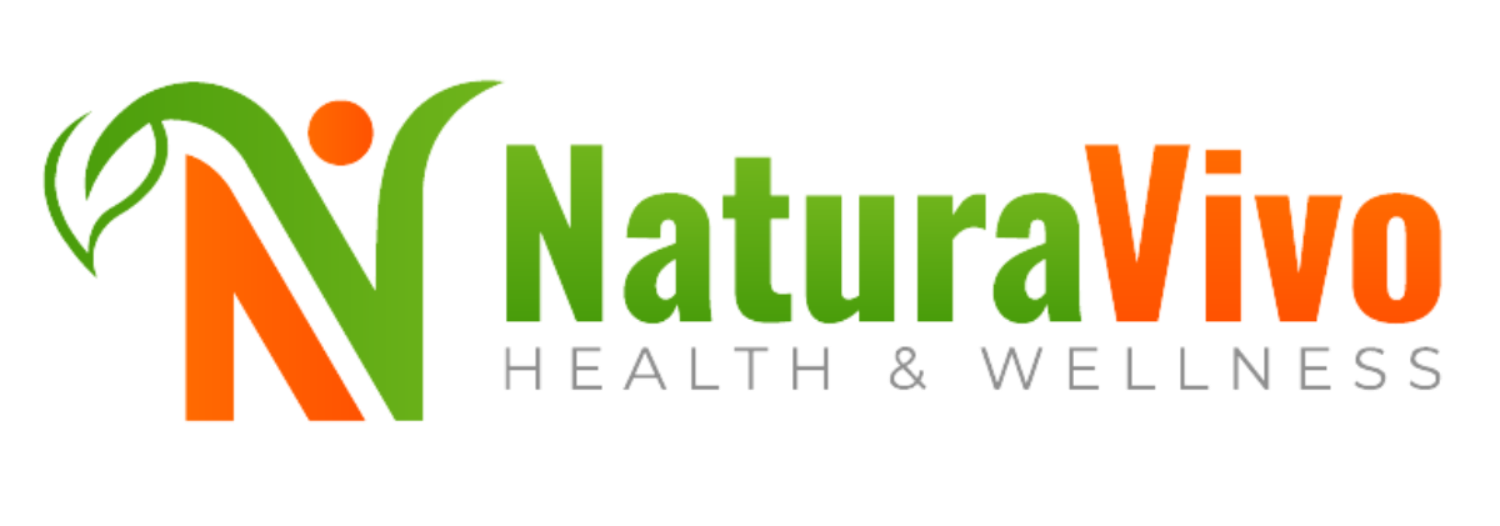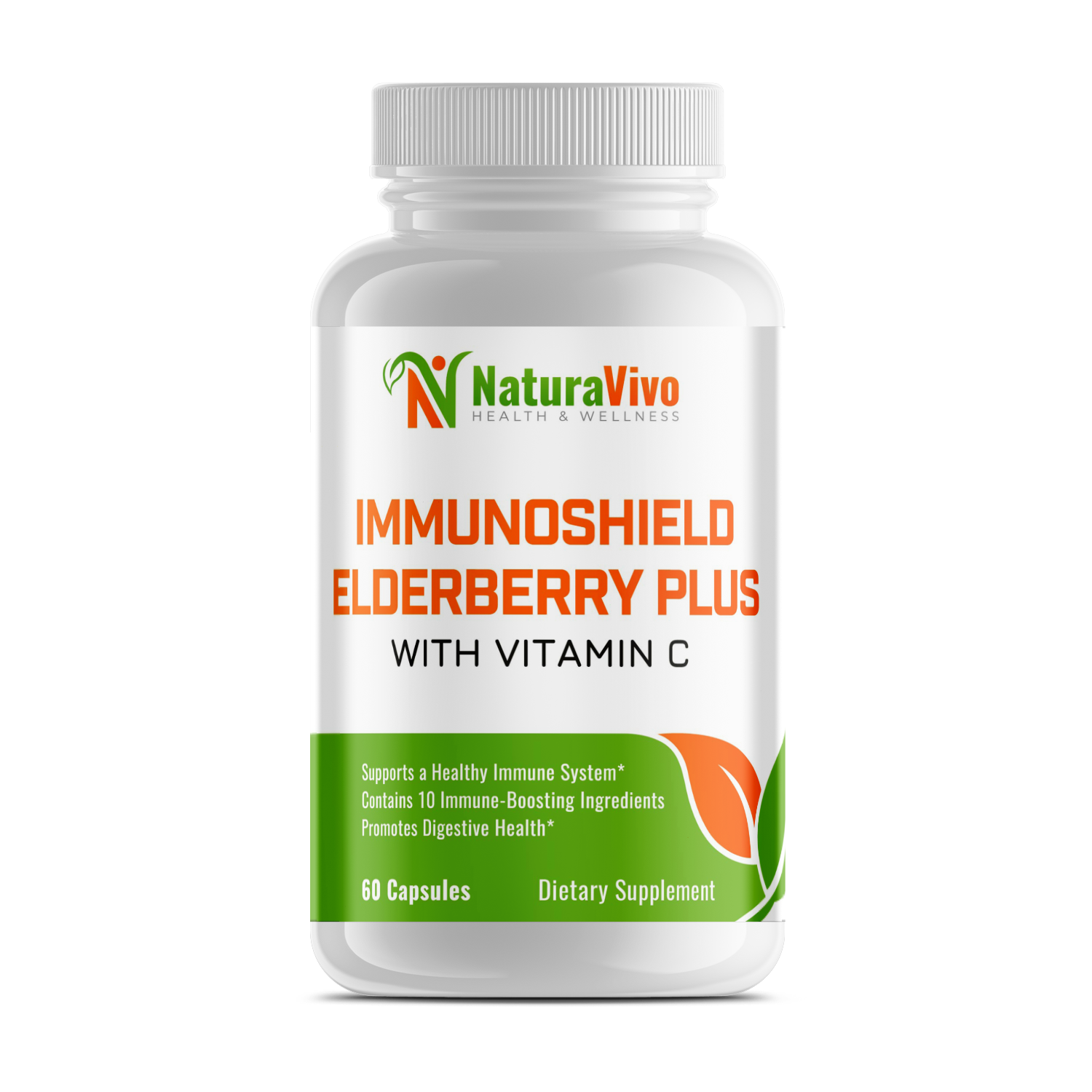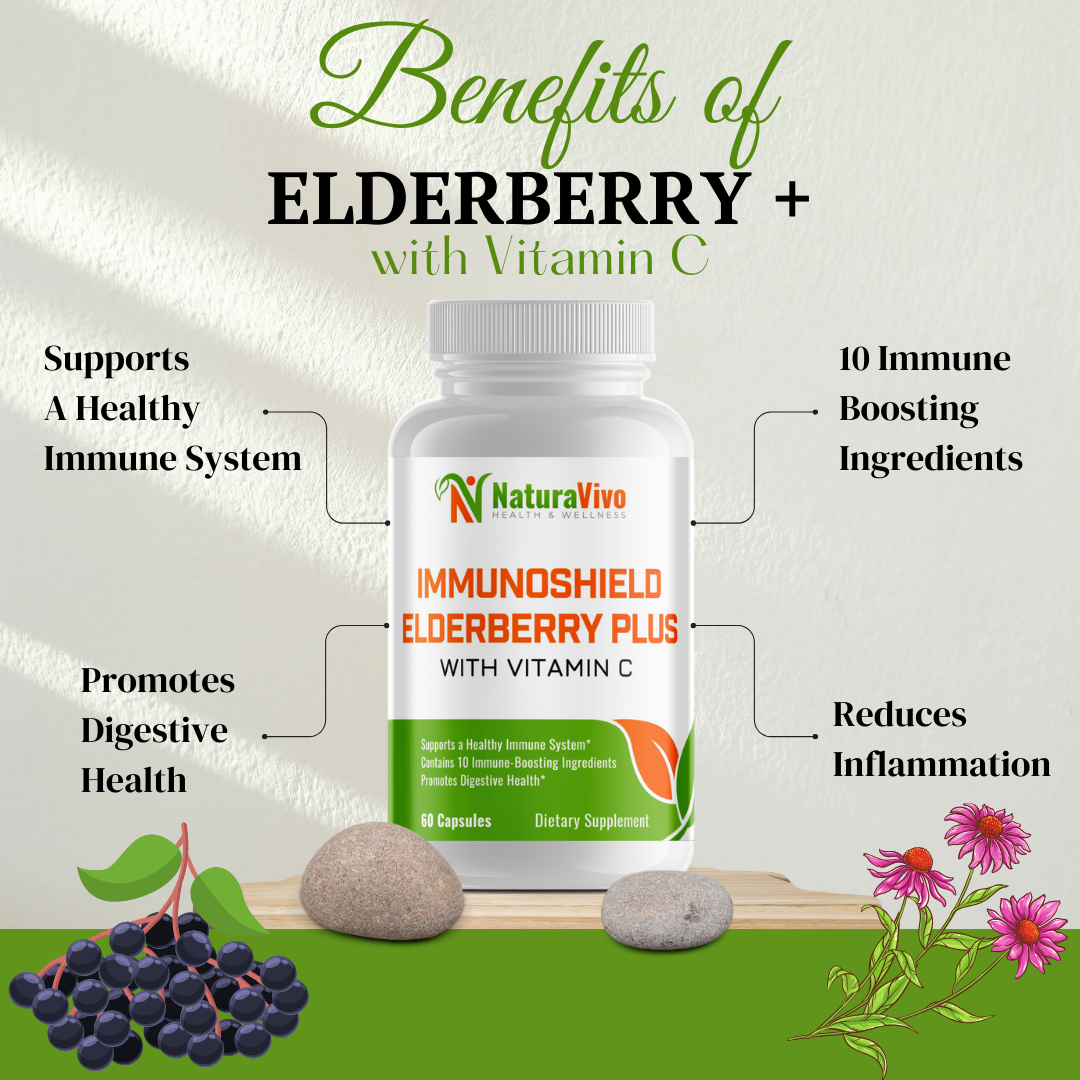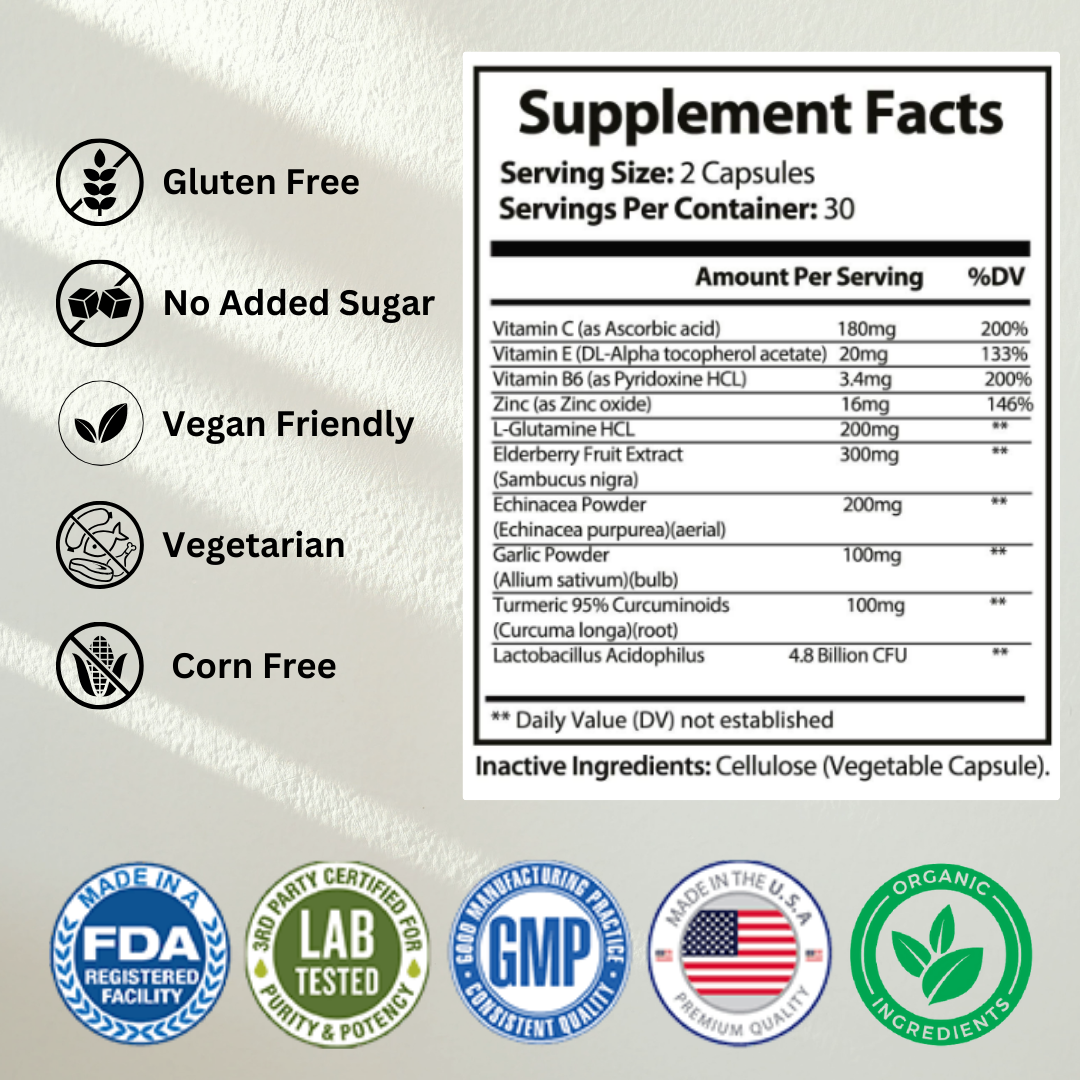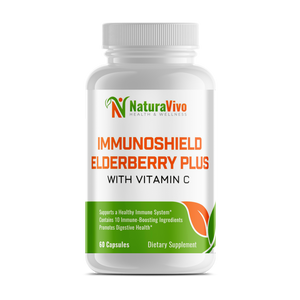ImmunoShield Elderberry Plus with Vitamin C
Your Natural Armor for Year-Round Wellness
In today’s fast-paced world, protecting your health isn’t just important – it’s essential. NaturaVivo’s ImmunoShield Elderberry Plus with Vitamin C is your daily defense against seasonal challenges, environmental stressors, and everyday fatigue. Packed with antioxidant-rich elderberry and the immune-boosting power of vitamin C, this formula supports your body’s natural defenses, helping you stay strong, vibrant, and ready to take on life.
Powerful Wellness Benefits
- Strengthened Immune System: Elderberry and vitamin C work together to support your body’s natural immune response.
- Antioxidant Protection: Fights free radicals and oxidative stress for overall health and vitality.
- Seasonal Wellness Support: Helps your body stay resilient during seasonal changes and high-risk periods.
- Enhanced Energy Levels: Vitamin C promotes healthy energy production to keep you feeling active and alert.
- Pure, Natural Ingredients: A clean formula you can feel confident taking every day.
Why Choose ImmunoShield Elderberry Plus with Vitamin C?
Your immune system is your first line of defense — and it deserves the best support nature has to offer. ImmunoShield Elderberry Plus with Vitamin C delivers potent, science-backed nutrients in a simple daily dose, so you can focus less on worry and more on living life to the fullest.

